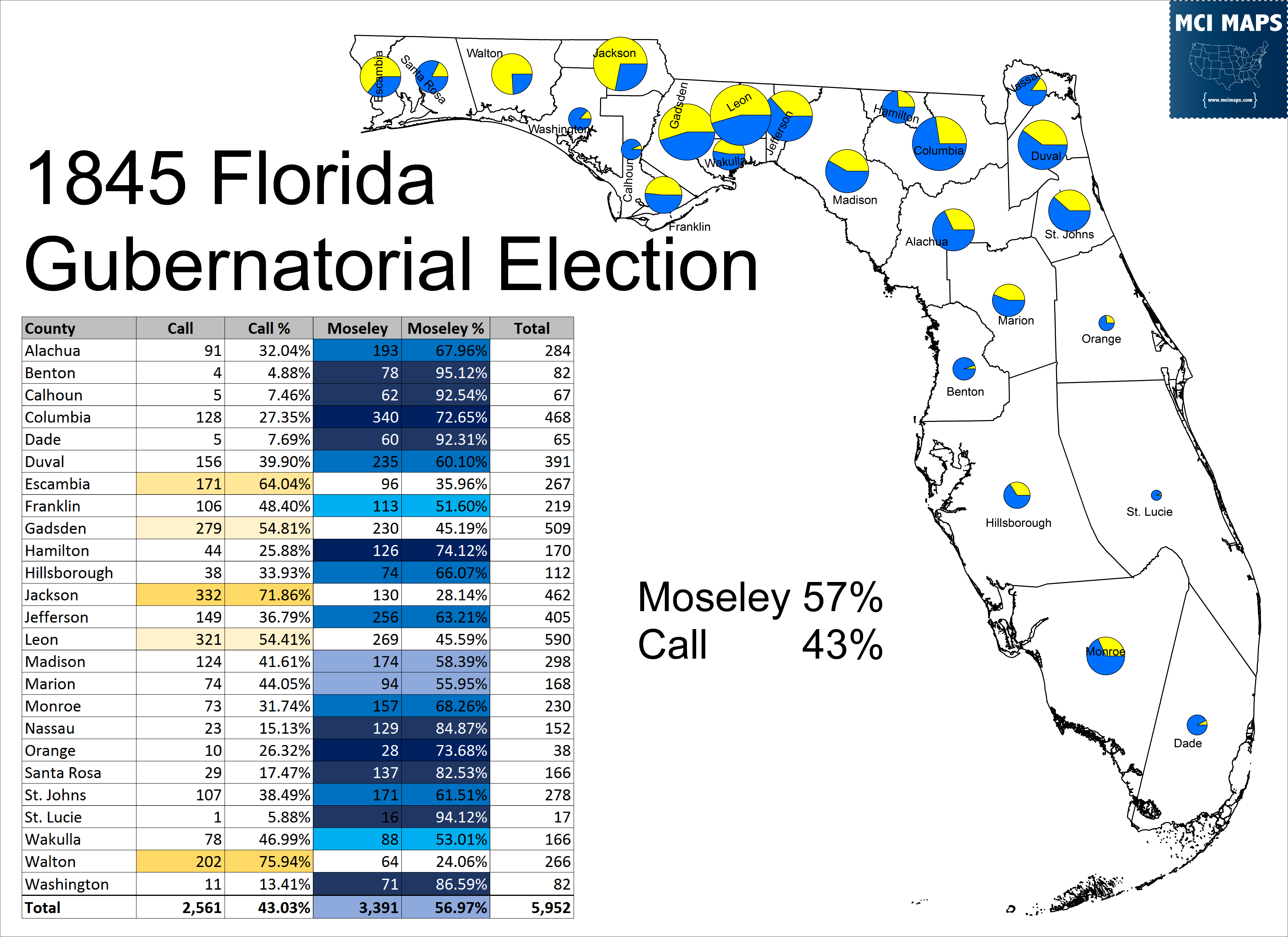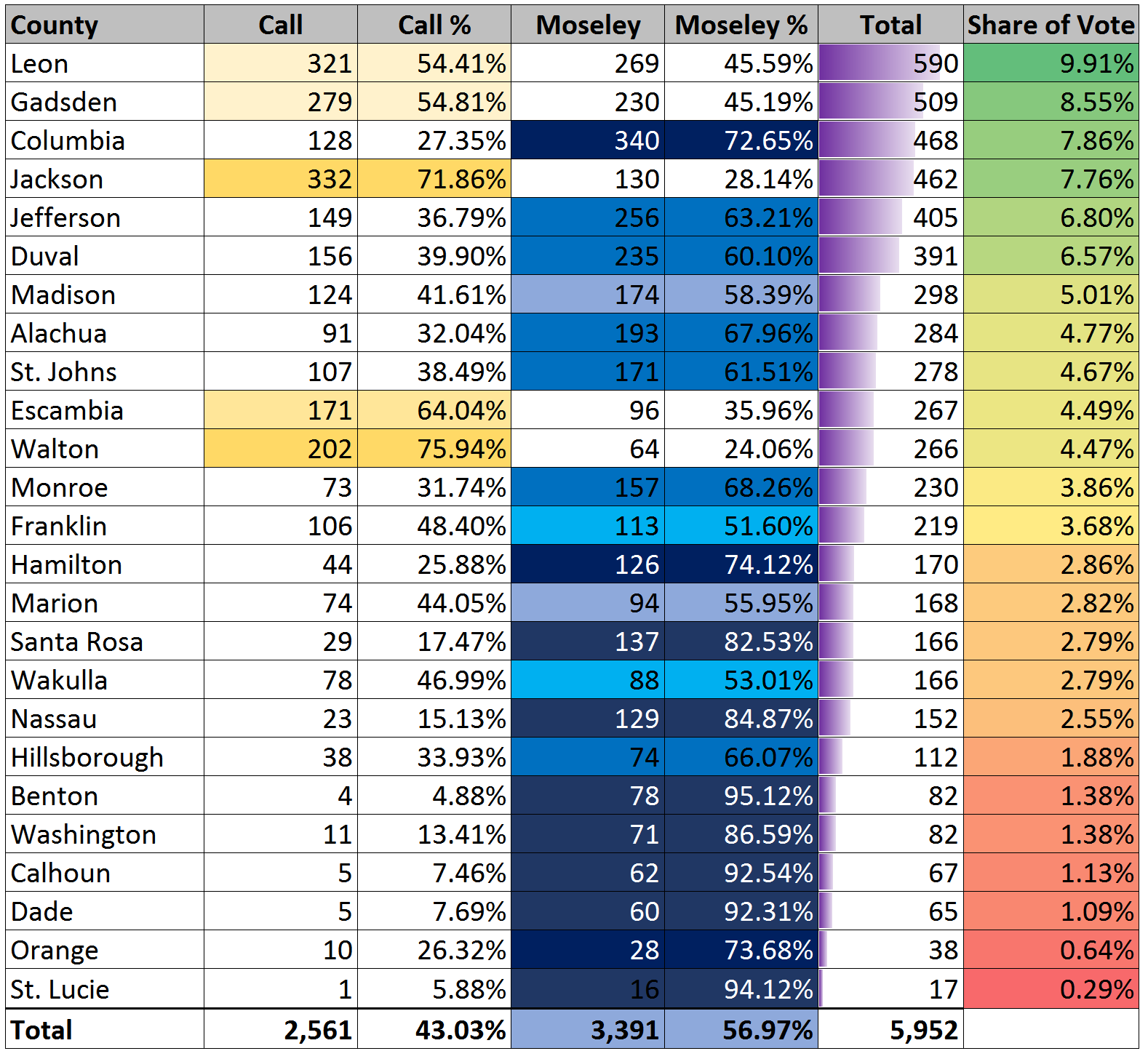On May 26th, 1845, two months after being admitted statehood, Florida held its first Gubernatorial Election. Florida’s road to statehood was not simple. The panic of 1837 had hurt the state’s finances and divided its population over the issue of banks and lending. Sectional splits between the panhandle and the east had become so severe there was open talks among the territorial legislature of splitting Florida in two. One of the largest pushers for statehood was the state’s At-Large delegate to Congress, Democrat David Levy. The push for statehood had been years-long, with delays occurring for a multitude of reasons both from DC and the state. Levy pushed for statehood of Florida as a balance for Iowa’s soon-admittance to preserve the North/South balance in the Senate. Statehood was finally approved in 1845. May 26th was set as the date for the Florida to elect its Governor, state legislature, and member of Congress.
Election night was a resounding win for the Democratic Party over their rivals, the Whigs. Democrats nominated William Moseley, a senator for the state’s territorial legislature at their convention. The Whig Party, much less organized, finally chose Richard Keith Call, a former territorial Governor, at a last minute meeting in Tallahassee after previous efforts to pick a nominee failed. The Democrat’s superior party organization won them the election. The Democrats dominated eastern Florida as well as low-populated counties in the west while the Whigs won some of the largest counties in the state.
Note there is some debate on the proper totals for this race. Totals by county give us 3,391 for Moseley and 2,561 for Call. However, other documents say 3,292 for Moseley and 2,679 for Call, around a 108 vote difference. As of this writing the real answer is yet to be determined (a visit to the state archives is in my future).
Call’s loss can be a bit shocking considering his ties to the state’s history. He was a two-time territorial Governor and major player in state politics. However, the dynamics of Florida made a Whig victory in 1845 very tough. Florida’s battering during the Panic of 1837 left a long-lasting impact on the states politics. The western and middle panhandle (say, everything west of the Suwanee River) long held sway over territorial Florida. The panhandle had a larger population and a notable upper slave-owning class. The area was home to many of the power-players of early Florida, many who would become Whigs. The name often given to these panhandle power players was “The Nucleus.” The major issue that separated Whigs and Democrats was the role of banks. Whigs where generally more pro-bank, similar to the national Whigs, and dating back to Federalist/Hamilton ideals. Following the Panic, and subsequent efforts of banks to get bond money back from the state, Democrats in the east saw the banks as a more villainous entity. Democrats also pushed back against an aristocratic panhandle that was ruling the territory. “The Nucleus” quickly became a term of derision. Florida Democrats, like Jackson, cast themselves as a common-man party. This summary is a drastic over-simplification, as plenty Democrats were wealthy and many FL Whigs had been Jackson backers. The two parties traded control of the territorial legislature and Democrats held control of the at-large delegate seat leading up to the vote. The clear split between the east and panhandle existed and manifested itself in the Gubernatorial Election. The east was slowly growing and it’s solid margins ensured a Democratic Victory.
While the Democrat won the most land-mass, the eastern and southern counties were far less populated. The map below shows how each county voted with a pie-chart adjusted for the total votes cast.
The votes were clustered in the panhandle. While the Whigs won most of the largest counties, it was often by respectable but not landslide margins. The Democrats, however, crushed the Whigs in small counties like Dade, but also in large counties like Duval and Columbia.
While the Democrats won the Gubernatorial race with a solid margin, the Congressional race fared even better for the party. Levy was elected as the Congressman At-Large with 60% of the vote. He would go on to be appointed to the US Senate by the new Florida legislature, which was in the firm control of the Democrats. The legislative margins where even more lopsided for Democrats, with them taking 54% of the state senate and 75% of the state house.
The Whigs where not to be counted out, however. In October of 1845, a special election was held for Levy’s Congressional seat upon his appointment to the US Senate. The election saw the Whigs win with 50.8% of the vote.
In 1848, the Whig’s would win the Governorship with with Thomas Brown. That same year the Whig Congressman, Edward Cabell, would win re-election with 53% of the vote and Whig Presidential candidate Zachary Taylor would win the state with 57% of the vote. Of course, four years later, Florida was right back in the Democratic column with a Democratic Governor. Florida has the reputation of swing state today, something it had some history with back in the 1840s.





